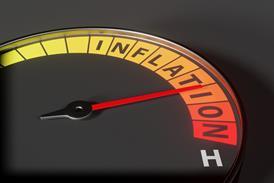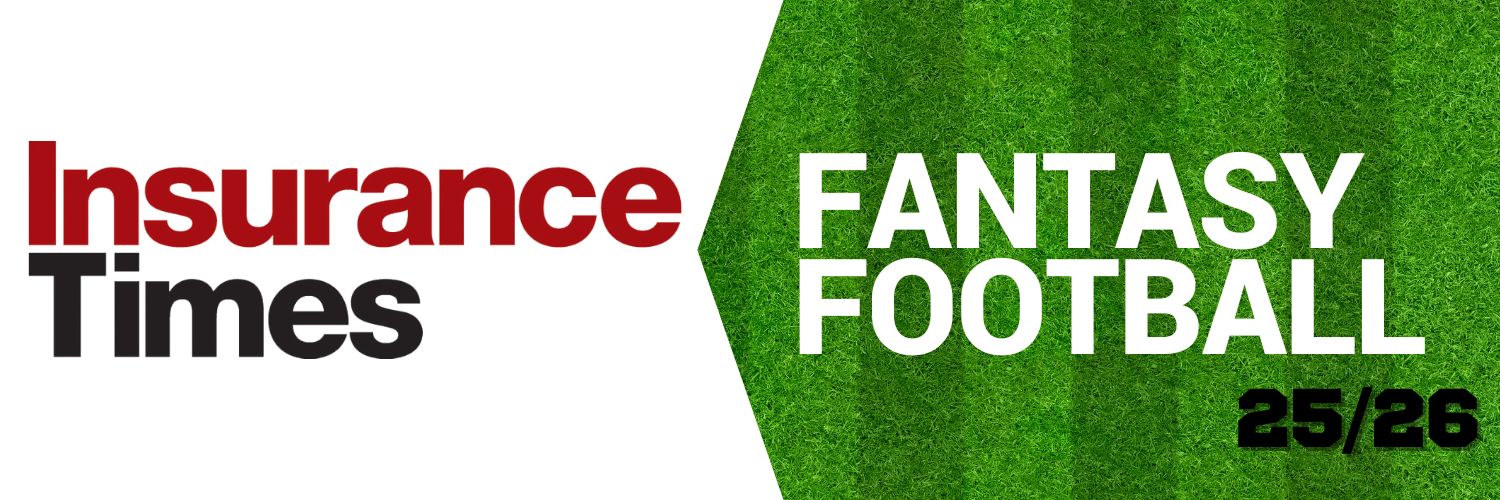Standard & Poor's non-life insurance rating outlook
Standard & Poor's non-life insurance rating outlook
Stability of Norwegian non-life insurance market could be affected by a downturn in investment income and possible return to price competition
Premium rate improvements in the Norwegian non-life insurance market have led Standard & Poor's to establish a stable outlook on the market, indicating that ratings are more likely to stay the same than to change.
However, the market's stability could become unsettled in 2001, if the global economy continues to deteriorate and price competition re-enters the market.
According to the Norwegian Insurance Association, fire claims across all lines rose 27% and motor claims 12% in 1999. Workers' compensation lines also contributed to the weakening of the market, with annual payments in 1999 considerably above premium income at NOK1.1bn (£800m). The overall combined ratio in 1999 was 118%.
At a time of poor underwriting results, investment income was sufficient to produce an overall profit in 1999 of NOK569m (£42m). Although investment returns for 2000 look set to be down on 1999 levels, hardening premium rates are expected to compensate for this and result in a subsequent lowering of the market's average combined ratio. The market has implemented significant rate increases, enabled by high claims frequency in 1999.
Nevertheless, the market's stability could potentially be damaged in the mid-term by a combination of investment instability and price competition, brought on by the high level of saturation in the sector.
Norway's non-life insurers' investments remain concentrated. When the financial crisis in the Far East took hold in Europe, Norway's stock market took a bigger dive than that of any other European country. Although insurers have since taken steps to avoid a repeat of the effect that this had on their business, they continue to invest significantly in the Norwegian market and are subsequently open to greater risk.
In addition, consolidation among the larger players in 1999 – Vesta with Tryg-Baltica and a number of banking entities to form Nordea, and Storebrand with Skandia to form If – has created much larger groups. In 2001, Sampo added to the consolidation trend when it announced that it was to acquire Storebrand. Should price competition intensify again alongside rising claims frequency, the market's combined ratio could rise.
The insurance market
In keeping with the recent trend of mergers and acquisitions in the European insurance industry, the Norwegian market has witnessed significant developments in the past year, including the emergence of financial groups with the capacity to transact business throughout the Nordic region. A major development in Norway and the Nordic region has been Storebrand's (Norway's biggest non-life insurer) and Skandia's merger of their non-life operations to form the new Nordic property and casualty insurance group, If P&C Insurance Pohjola of Finland was also to be part of the new pan-Nordic non-life insurer, but reversed this decision in May 2000. If is based in Sweden and owned by Skandia, with a 56% equity stake, while Storebrand has a 44% stake.
In another major development in May 2001, Sampo plc, the parent company of Finnish insurance group Sampo, announced that it was to acquire the Storebrand Group and to place Sampo's non-life business in If. This will give Sampo a 67.5% stake in If and Sampo will become the largest non-life insurer in Norway, albeit from the Swedish base of If. In 2002, it is intended to float If on the stock market, though there is a possibility of the company being acquired by a group based outside the Nordic region before this happens.
With the transfer of Storebrand non-life insurance business to If in Sweden, Gjensidige Forsikring is now the largest Norwegian non-life insurer. Gjensidige, Vesta and Sparebank 1 underwrite a broad book of domestic business and have a very strong position in the market.
Gjensidige demutualised in 1999 after the merger with Sparebanken NOR in 1998. It has close relationships with the local fire insurance mutuals. Gjensidige Marine & Energy ceased underwriting at the end of 1999 and its marine portfolio was transferred to Gjensidige Forsikring. Gjensidige Group has therefore ceased to underwrite energy business. Also in 1999, Gjensidige Kreditt ceased to underwrite business.
In 1999, Vesta, the second biggest non-life insurer in Norway, was sold by Skandia to Tryg-Baltica AS (Denmark), part of the Unidanmark Group. The marine and energy business of Vesta was, however, transferred to the new Scandinavian non-life insurer, If. Vesta has a market share of 19% in the Norwegian non-life market and 5% in the life and pension market and the merger created the second biggest insurance group in the Nordic region. The subsequent merger of Mertia-Nordbanken with Unidanmark to create Nordea in April 2000 created a significant financial group with capacity to cross-sell throughout the Nordic region.
Sparebank 1 is the third-largest non-life insurer in Norway. In November 1999, Sparebank 1 Gruppen bought the financial group VAR Gruppen, including VAR General (formerly Samvirke) and subsequently renamed VAR General as Sparebank 1. The main customer group of the company is the trade unions. The company also underwrites risks from co-operatives and local government. The new group will be the fourth largest banking and insurance group in Norway, with assets totalling NOK180bn (£13.8bn). The remaining non-life insurers in Norway in the list are specialist insurers.
Market features
Compulsory insurance
Compulsory insurances are as follows :
In 1990, the insurance industry took on the statutory workers' compensation for all employees. The scheme has been set up as a market-based solution, subject to competition.
Other
Non-admitted insurance is permitted, except for compulsory insurances.
There is no taxation of insurance premiums in Norway. Corporation tax at a flat rate of 28% was introduced in 1992. Although personal lines business is mostly underwritten via agencies, brokers now play a major role in the commercial lines market. Regulatory approval is required to operate as a broker, as is a guarantee to cover liabilities.
Norwegian Insurance Association
The Norwegian Insurance Association (Norges Forsikringsforbund) is the main trade association for life and non-life insurers in Norway. The association gets involved in damage limitation and preventative measures. It has combined forces with the Health Assessment Board to set up a motor damage valuation system and a system to recover stolen cars and boats, amongst other industry issues.
As from January 1, 2000, the Norwegian Bankers' Association and the Norwegian Insurance Association merged and became the Norwegian Financial Services Association (FNH).
Structural developments in the finance sector, increased international competition and the growth of common international competition rules, were some of the reasons behind the merging process.
Norwegian natural perils pool
The Norwegian natural perils pool requires compulsory contributions from all insurers underwriting fire insurance.
Insurance regulation and supervision
The regulatory authority, Kredittilsynet – the Banking, Insurance and Securities Commission – (BISC), has its powers delegated from the Ministry of Finance and is at:
P.O. Box 100 Bryn
Østensjøveien 43
0611 Oslo
Norway
Tel: + 47 22 93 98 00
Fax: + 47 22 63 02 26
website: kredittilsynet.no
The Norwegian insurance sector is very heavily regulated. The Insurance Activities Act 1988 is the principal law governing insurers. The Insurance Contract Act and separate legislation on aviation, motor vehicle liability and workmen's compensation insurance regulate the interpretation of insurance policies. There are no specific laws to regulate reinsurance, but the 1988 Act also applies to reinsurance activities. Brokers must not place insurance with companies not licensed in Norway, but this prohibition does not apply to non-life insurance of commercial and industrial risks, nor to pure life or travel and personal accident insurance.
The regulatory framework for the industry has been undergoing constant change in recent years and many amendments to the act and the regulations have been made. A strained relationship has developed between the authorities and the industry, arising from opposition within insurance companies at what they regard as a lack of understanding from the authorities about the problems and the costs of adaptation. Furthermore, there is a perception that the authorities are reluctant to modernise detailed and complex legislation. As a party to the EEA agreement, Norway has implemented the EU insurance directives.
Insurance business may be conducted by a joint-stock company, a mutual association or a foreign company via a general agent. Insurers are required to obtain permission and a licence from the government. However, the legislation implementing the EU insurance directives allows freedom of services and home state supervision for companies from EU and EEA countries. An applicant must submit a number of documents, including an operating plan for the first two years of business, containing the following :
Life, non-life and credit insurance must be written by separate companies
The BISC has the power under the 1988 Act to control premium rates, the risks that a company writes and its financial position. Policies issued at rates which the BISC considers unreasonable or potentially damaging to the financial stability of the insurer can be prohibited by the BISC. The BISC has wide powers of intervention, including access to any accounts at any time and the right to apply to the probate court for a company to be put under special administration. Such powers are normally used for new companies, for companies in financial difficulty, and in cases where national or policyholder interests are threatened.
Various solvency requirements and guarantee funds have been set up to safeguard policyholders (see accounting conventions below) and, since 1993, additional provisions have been allowed, to build up reserves to safeguard the future viability of an insurance company. There are no independent policyholder protection funds.
All insurance companies must prepare annual financial statements that must comply with the Companies Act 1976. Accounts must give a true and fair view and must include:
Movements on all technical and shareholders' reserves must be shown. At least one certified public accountant must be appointed as an auditor, who must be qualified in Norway. An opinion on the adequacy of non-life companies' technical reserves must be given by the auditor. Financial statements are filed with the companies' accounts control registrar and are available to the public at a cost.
Separate control committees are appointed at companies' annual shareholders' meetings.
The purpose of the committee is to supervise the internal organisation and management of the company.
Norway is the only country in the EU and European Economic Area (EEA) where insurers have to meet two equity capital requirements for insurance. As well as having to meet solvency requirements in line with EU directives for insurance, companies also have to meet equity capital requirements, linked to assets, which normally apply only to banks and other credit institutions within the EU.
Accounting conventions
The reports are based entirely on the figures from the annual shareholders' accounts.
1. Solvency
For new companies, minimum capital requirements are set by the BISC according to the circumstances of each case, but may not be less than NOK25m (£1.8m). Foreign branch offices must meet the same requirements as domestic companies. Half of the requirements, however, may be met by a bank or an insurance guarantee.
Since 1991, the solvency test applied by the regulators assesses a company's assets (including off-balance sheet assets) and assigns a weighting according to the credit risk they are assumed to represent. Subordinated capital and equity must be equivalent to at least 8% of the weighted assets. This test must also be passed on a consolidated basis if the company has holdings of more than 20% in another financial institution. In addition, the BISC may order consolidation in respect of holdings of 10% or more in non-financial institutions.
2. Asset valuation
Investments are generally valued in the balance sheet at the lower of market value or cost, applied on a portfolio basis. Where we have been able to ascertain excess market values, we have made an adjustment to shareholders' funds to reflect this. Bonds may be classified as “held to maturity” and accordingly carried at amortised cost.
3. Technical reserves
Companies are required to calculate premium liability, loss liability and contingency liability at the end of each four-month period of the year. Premium liability and loss liability are calculated separately for each class of business written. The calculation shall, as far as possible, use a risk-based method. The methods used and an account of the mode of calculation must be notified to the BISC. The BISC may require a company to make supplementary provisions if the level of premium in any one or more classes is presumed to be inadequate.
4. Shareholders' funds
Shareholders' funds in the reports include under Extra Shareholders' Funds, the security reserve and the statutory natural perils reserve. The security reserve is a free reserve which is intended to cover substantial unexpected fluctuations in future claims payments. The allocation must fulfil the BISC minimum requirements. The statutory natural perils reserve is a reserve representing the difference between natural perils premiums for the year and payments included in the Norwegian Natural Perils Pool.
Included under Other Shareholders' Funds are the reinsurance reserve, the administration reserve and allocations to the general insurance companies' guarantee scheme:
5. Realised/unrealised gains
Where possible, we exclude unrealised gains or losses from the income statement display in our reports.
General
Norway covers an area of 149,405 square miles (386,959 square kilometers) and has a population of approximately 4.5 million. Oslo, the capital city, has a population of 502,867. The currency is the Norwegian Krone (NOK). UK£1 = NOK13.75 as at June 16, 2001.
In September 1997, the three centrist parties – the Christian Democratic Party, Centre and the Liberal Party – forged a coalition to form a minority government. On March 10, 2000, this coalition was defeated in a vote of no confidence related to energy policy. Norway's constitution is unusual in that the defeat of the ruling government does not precipitate a general election, which operates on a fixed four-year cycle. Instead, the existing composition of the parliament is invited to form a new government and on March 17, 2000, the Labour and Conservative parties formed a new coalition government. The next general election will be held in September.
In November 1994, Norway voted against joining the European Union. While there do not appear to have been any significant economic consequences, largely because of its wealth of natural resources (the petroleum sector accounted for an estimated 18.7% of Norwegian GDP in 1999), Norway is more isolated politically, having less influence over EU decisions that may affect it. As an EEA member, which encompasses the 15 members of the EU as well as Iceland and Liechtenstein, Norway has free trade access to EU countries and close to identical conditions of competition, which ensures that its businesses can compete in Europe. However, non-EU membership increases the risk that international companies would choose to locate within EU member states over Norway and that Norwegian companies could relocate to EU member states.
EU membership was strongly supported by the Labour-led government of the time, as well as Norway's largest companies. The decisive issues were Norway's generous agricultural subsidies, its very supportive regional policies, and more general sovereignty issues, particularly regarding off-shore development. EU, and ultimately euro, membership remains highly unlikely in the near future, despite an apparent revival in support and the return to government of the pro-European Labour Party. A positive result in a future referendum will depend greatly on the country's own economic performance and on Denmark's, Sweden's, and the UK's stance regarding the euro at that time.
Standard & Poor's sovereign rating
Publication date: March 17, 1999
Analyst: Kristel Richard, London 020 7847 7107; Konrad Reuss, London, 020 7847 7102
Credit rating: AAA
The Kingdom of Norway's ratings are supported by:
Outlook
With the petroleum sector remaining an important source of wealth well into the next century, and substantial fiscal flexibility, Norway is well positioned to cope with a slowdown in its economy. In addition, the build-up of substantial public financial assets means that Norway, compared with its continental European peers, is well placed to deal with long-term fiscal issues such as financing future pension expenditures in the face of an aging population. Should the current weak coalition fail to hold power until the next elections, due in 2001, no significant departure from current policies is expected, given the long tradition of consensus building in Norwegian politics. In the short term, the challenge for Norway's policymakers is to restore the Solidarity Alternative, an agreement between government, employers, and employees, which has served the country well in the past. The importance of fiscal and wage restraint (recognized by social partners) in maintaining competitiveness and bringing the Norwegian Krone back to its initial range suggests that the current coalition is likely to avoid reverting to an overly expansionary fiscal policy.
Norway insurance analyst contacts:
David Laxton London 020 7847 7079
Dominic Skeet London 020 7847 7054
Simon Marshall London 020 7847 7080









































